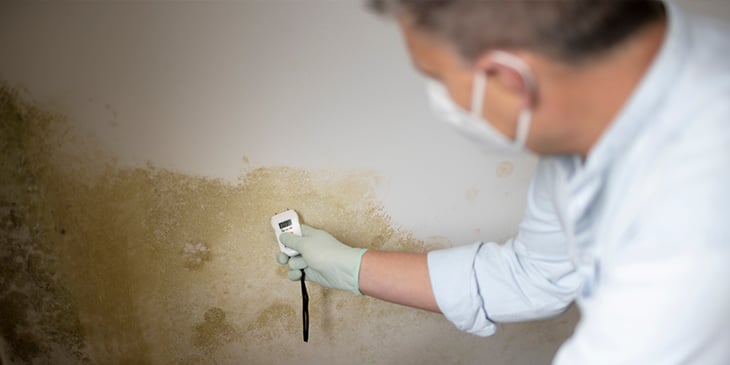Damp and mould are more than an unsightly nuisance; they pose serious health risks, especially for children, older adults, and people with respiratory issues. The tragic story of two-year-old Awaab Ishak, who suffered prolonged exposure to mould, highlighted the need for immediate action and lasting change, which resulted in the introduction of Awaab’s Law.
Richard Abbots of Inventory Hive explains how routine property visits are essential for legal compliance, and for maintaining safety in rented homes:

The role of routine inspections for damp and mould
Damp and mould thrive when there’s too much moisture in a home, which can happen from condensation, leaks, or poor building ventilation when cooking, washing or doing laundry. As well as the health risks, damp also causes damage to walls, ceilings and furniture. It is therefore vital to address issues at the first sign of trouble.
To comply with Awaab’s Law, proactive property inspections and routine visits are crucial. Waiting for tenants to report damp and mould can delay improvements and lead to worsening conditions, whereas routine inspections allow landlords and agents to detect issues early, take preventive actions, and resolve small problems before they escalate.
These visits also help to build trust with tenants. Proactive inspections demonstrate a commitment to tenant welfare, fostering trust between residents and landlords. This trust is essential in cases where tenants feel uncomfortable reporting maintenance issues.
Preventative maintenance is often more cost-effective than reactive repairs too. Addressing small issues before they escalate can save housing providers significant time and resources in the long term.
Best practice for routine inspections and maintenance
It’s important that landlords, letting agents and housing associations develop a systematic approach to routine property inspections to ensure compliance:
- Quarterly or Biannual Inspections: Conduct routine inspections every three to six months to ensure that all properties remain safe and habitable.
- Clear Communication Channels: Establish clear communication channels between tenants and housing providers. Encourage tenants to report issues immediately, emphasising that early reporting will not result in rent increases or penalties. Using a platform like Inventory Hive makes this easier for all parties.
- Record-Keeping and Documentation: Keep detailed records of inspections, including photographs, reports, and any actions taken. Documentation serves as proof of compliance with Awaab’s Law and can be critical if disputes arise.
- Tenant Education and Awareness: Educate tenants on preventive measures, such as proper ventilation, to minimise damp and mould issues. This empowers tenants to be proactive in managing their living environments.
- Agent Education: Whilst tenant lifestyle can contribute to damp and mould, damp is more commonly a result of issues within the structure of the building, such as lack of available ventilation. It is therefore essential that agents understand the structural causes of mould and the necessary actions for rectifying them promptly.
- Tools and Training for Inspection Teams: Equip inspection teams with checklists and/or training to identify early signs of damp, mould, and ventilation issues.
The Inventory Hive platform has been designed to make the process happen seamlessly. From inspection scheduling, online checklists and record-keeping to tenant communication and education, it helps landlords and agents to tick each box and stay compliant.
BLOG DISCLAIMER
This article is intended for information purposes only and does not constitute legal advice. If you have any questions related to issues in this article, we strongly advise contacting a legal professional.
These blog posts are the work of Fixflo and are licensed under a Creative Commons Attribution-ShareAlike 3.0 Unported License. In summary, you are welcome to re-publish any of these blog posts but are asked to attribute Fixflo with an appropriate link to www.fixflo.com. Access to this blog is allowed only subject to the acceptance of these terms.

